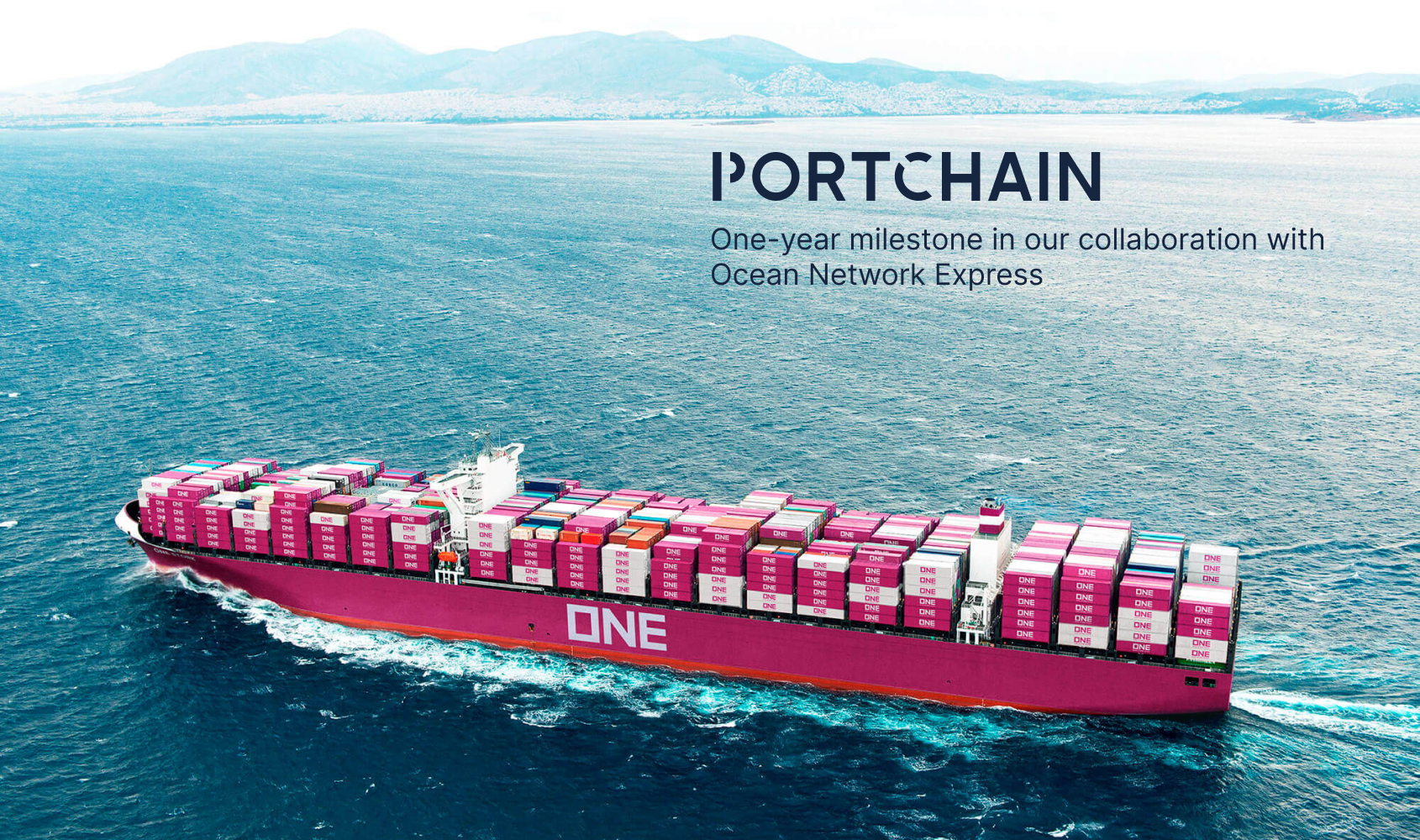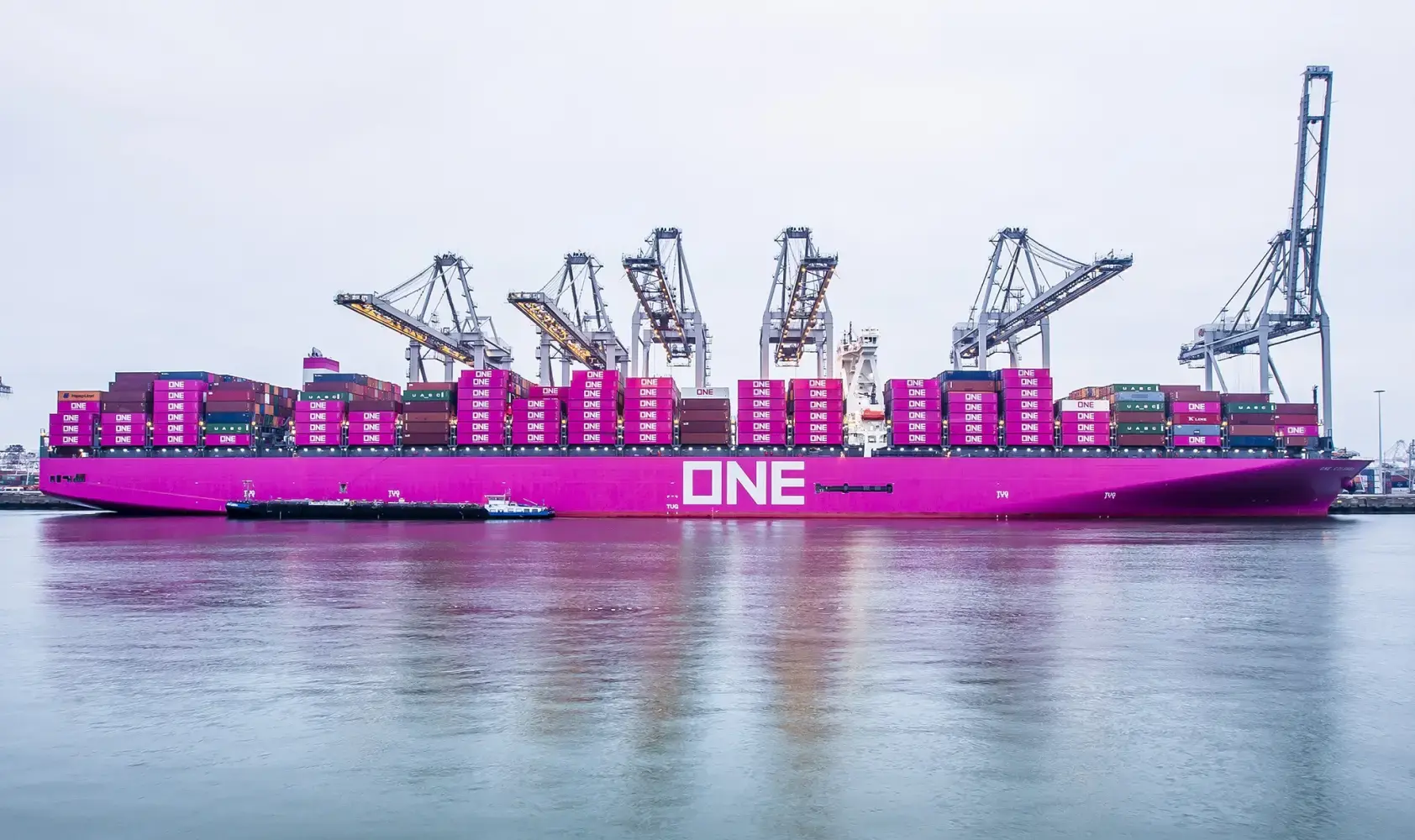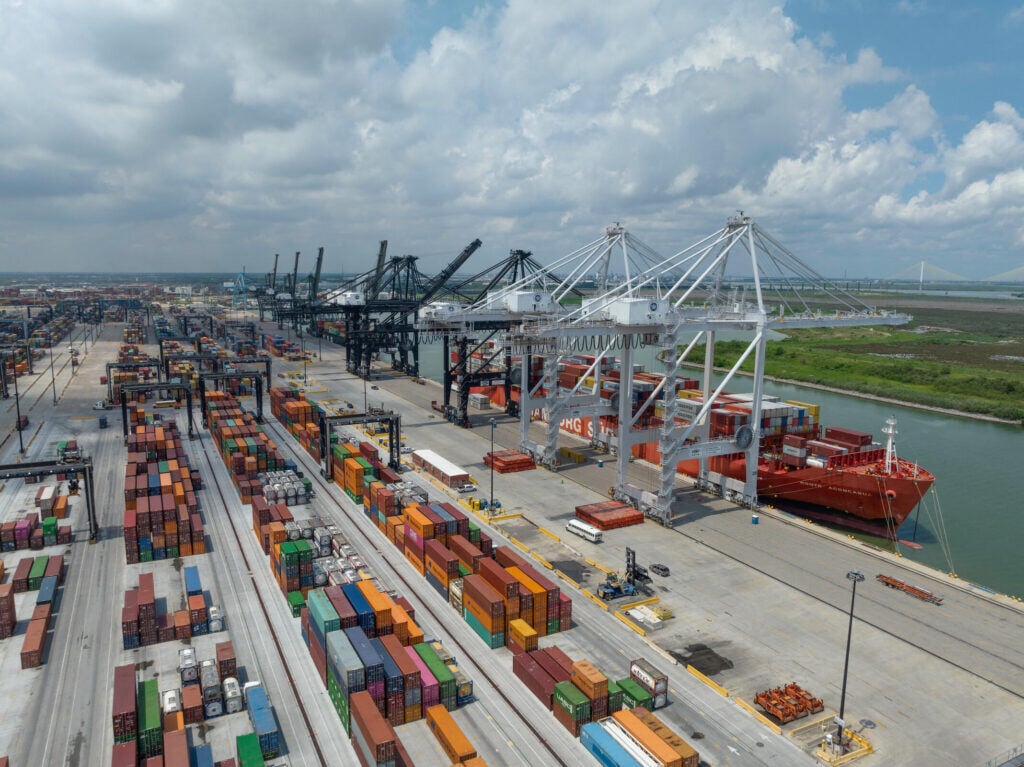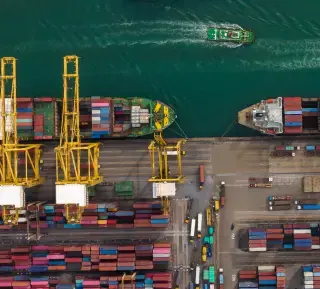Introduction
Supply chain disruption, a prevailing climate of economic and geopolitical uncertainty, and ambitious sustainability targets have increased the strategic importance of optimising vessel arrivals between container carriers and terminals. New emissions regulation from the IMO (CII ratings) is forcing container carriers to reduce their emissions, which can either be achieved through upgrading their fleet or operating the existing fleet more efficiently, such as reducing waiting time at ports. The IMO estimates that bunker fuel consumption can be reduced significantly by improved coordination between the container carrier, terminal and port, through a process known as Just-In-Time arrivals. They estimate 5.9 per cent of bunker fuel can be saved by aligning 24 hours before arrival and up to 14 per cent from the start of the voyage at the preceding port.
Leaders across the industry are expected to drive the execution and management of contracts while lowering the environmental impact of shipping through Just-In-Time arrival. Meanwhile, their teams ultimately make the daily decisions that secure vessel on-time reliability, high asset utilisation, and achieve Just-In-Time arrival for emissions reduction.
However, achieving Just-In-Time arrival in practice is not easy. It requires industry leaders to look inside their engine room and focus on their data sharing processes, which today is still a predominantly manual process that relies heavily on email, phone calls, and numerous spreadsheets to gain visibility and make decisions.
Largely, the industry has been unaware that platforms can digitise and speed up the transfer and accuracy of data shared between parties and provide them with the foundation to make better operational decisions. Today, the need to create efficiencies drives the adoption of digitisation focused on data collaboration. One clear example of the shift to focus more on data sharing processes is the establishment of the Digital Container Shipping Association (DCSA), a standards body founded by nine of the top 10 carriers, which have developed data standards for Just-In-Time Arrivals.
Portchain has developed Portchain Connect, a digital platform that enables carriers and terminals to digitise their data sharing process, enabling industry leaders to automate processes, access more accurate and structured data for better decisions, and enable them to measure the performance of their data processes. The platform digitalises the berth alignment process and creates a network of carriers and terminals to help businesses connect and collaborate on real-time data.
This paper illustrates how businesses can harness platforms and overcome challenges related to non-digitised berth alignment.
Challenges facing carriers and terminals
Operational teams, such as berth planners, line managers, and port captains, are often forced to work reactively rather than proactively. They juggle strategy and execution while making daily, even hourly, decisions and are constantly faced with volatility of vessel arrival times, weather patterns, and stowage changes. Making life harder, they make these decisions while balancing costs, maintaining compliance, and broadcasting updates of changes to multiple stakeholders.
Often, such teams have to act without full context for the decisions they make, on top of the fact that the number of decisions to be made has grown beyond reasonable endeavors. Moreover, operational teams rely on siloed technology systems and business processes that don’t provide real-time visibility.
Complexity and the slow speed of human collaboration often delay decisions. The information must be gathered and analysed from multiple sources, including spreadsheets, emails, phone calls, or in-person meetings.
Traditional approaches to capturing knowledge and determining the best actions aren’t enough to stay competitive. True digital transformation of the berth alignment process requires technology that enables faster transmission of data and visibility.
Gaining visibility and building decision intelligence
Digital transformation enables leaders and their teams to access all corners of their business, putting essential information at their fingertips. An emerging trend in container shipping is Decision Intelligence – the ability to digitise, augment, and automate decision-making. It has driven positive outcomes in the broader supply chain and other industries, such as agriculture, warehousing, and manufacturing.
Savvy leaders are looking at leveraging decision intelligence in their operations and supporting their teams.
In the berth alignment process, teams often need, or are expected, to act quickly, but how do they respond when they receive new information eluding to disruption? With manual processes and a lack of visibility, it could take hours to identify the issue, followed by further analysis to identify options and reach a decision. These issues can be identified in real time through digital platforms. Operational teams can quickly analyse the data because all data is in one place with context.
When a decision is made, the platform updates the master record, sends updates to the connected business systems (terminal, carrier, port, or community operating system), and avoids data mismatches between parties. Using a platform, such as Portchain Connect, means berth alignment and sharing of the change is resolved in a fraction of the time. Beyond simply automating the data gathering and keeping systems updated, platforms make it possible to keep a digital log of every decision made. The captured valuable knowledge enables the team’s ability to automate more decisions in the future.
Also, by capturing decisions and their outcomes, carrier and terminal management can better understand discrepancies between planned and actual results. By transacting on a platform you get the unique benefit of measuring business and data performance. The latter is increasingly important in the digital age and will highlight areas where data quality is poor, not timely, or non-competitive.
Benefits of digitising your berth alignment process
With improved tools to digitise, automate and analyse decisions, operational teams are identifying new opportunities for revenue improvement or cost reduction.
One of the best outcomes is improved communication, collaboration, and accountability within the terminal or carrier and its ecosystem of customers, service providers, and partners. To give one example, by using Portchain Connect a large European container terminal receives direct access to its customer (carrier) scheduling data and is notified by Portchain Connect in real-time when a vessel is delayed. In contrast to relying on a phone call to gain knowledge of a delay, the terminal is now proactively identifying issues, accepting the schedule, or is prepared to make timely recommendations before the local representative contacts them.
The company has dynamically streamlined its collaboration. There is also more context and awareness of each port call across the organisation because all data is structured and accessible in real time.
Conclusion
Digitising container vessel arrivals is crucial for reducing emissions and improving efficiency. However, achieving Just-In-Time arrival is challenging due to manual data sharing processes. The industry is shifting towards data sharing processes, exemplified by the DCSA and data standards for Just-In-Time Arrivals.
Platforms like Portchain Connect automate processes, provide structured data, and measure performance. Digitising berth alignment can overcome non-digitised challenges and improve decision intelligence, while improved tools lead to better just-in-time arrivals, communication, and collaboration.
Digital transformation is possible for all carriers and terminals, and businesses that start this journey now will be better able to meet the challenges of today and innovate for the future.
—
About the company:
Portchain is a software provider of berth alignment solutions for container terminals and carriers creating sustainable win-win solutions to improve operational efficiency for container shipping.
Portchain Connect is a digital platform enabling terminals and carriers to share and receive trusted data and reduce delays in information transmission. Portchain Connect provides users with an easy-to-use overview of all their vessel calls and ensures they can securely transfer berthing information, remove the costs associated with manual non-digitised communication and align on berthing windows to improve schedule reliability.
About the author:
Craig Halford is an accomplished sales leader with over 15 years of experience in the technology and shipping industry. He currently serves as the VP of Sales at Portchain, overseeing the company's global sales performance and strategic initiatives. Throughout his career, Craig has held various strategic roles in technology companies, from startups to large corporations. He has a proven track record of driving growth at Navis and XVELA, with 12 years of experience in commercial, management, and cross-functional advisor roles.



